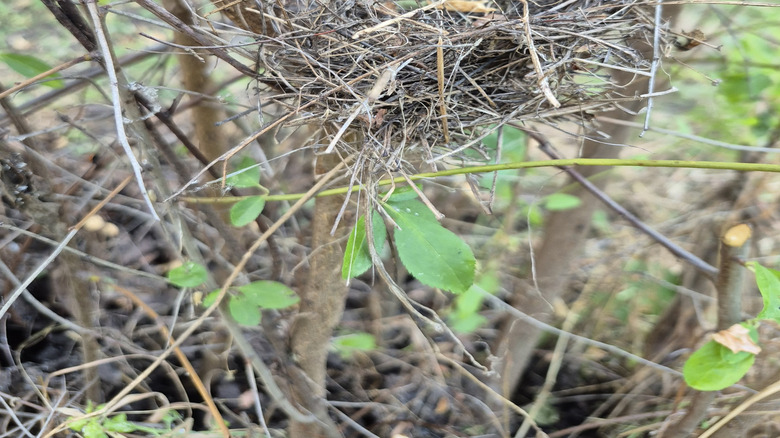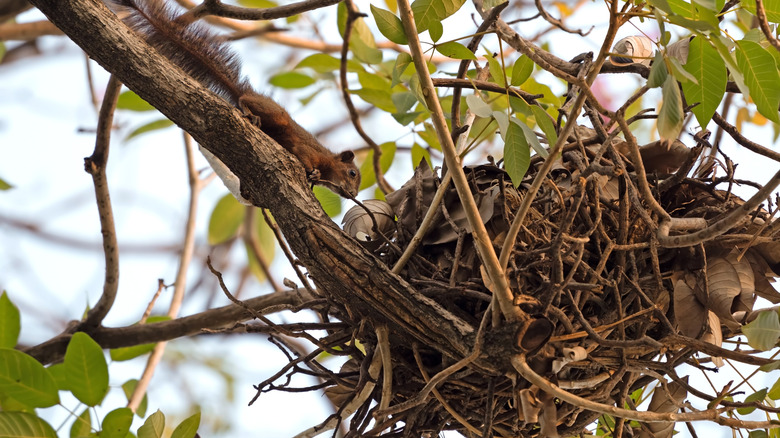Turns Out That Bird Nest May Have A Different Pest Living Inside
Spotting a bird nest in your backyard can be an exciting discovery. When you find a cluster of twigs, leaves, pine needles, and other items woven together high up in a tree, it could be tempting to help out by knowing the best nest materials to leave out for birds. However, what you're looking at may not actually be a bird nest after all. Squirrel nests are often mistaken for those belonging to birds, but there are some general ways you might be able to tell the difference between the two.
Location is perhaps one of the biggest defining factors when trying to tell the difference between a squirrel nest and a bird nest. Also called a drey, a squirrel nest is typically built as high up in a tree as possible. This helps give the squirrels extra protection from predators while also allowing them to survey the surrounding area down below. You will not find dreys in bushes, small tree branches, or short trees like you might a bird's nest. Seeing such a nest in a tall tree from the ground level is a likely sign that it belongs to a squirrel. Also, while birds might sometimes build nests around the eaves or roof of your home, they will not do so in attics like squirrels occasionally do.
Key differences between bird and squirrel nests
Birds can also sometimes build nests in taller trees, but they are more likely to build them closer to the ground. They also use twigs and other materials, such as mud, pine straw, and yarn. You're more likely to see large leaves sticking out of a squirrel nest, though. Also, unlike a bird's nest, which is typically open in the middle, squirrels tend to provide more coverage to make their dreys enclosed.
There are also a few key characteristics associated with different species of squirrels. Eastern gray squirrels tend to build larger dreys in trees at least 20 feet from the ground. Red squirrels, on the other hand, are more likely to build nests within coniferous trees. Flying squirrels are rarely-seen animals known for feeding at night that also build dreys when tree cavities aren't available — they may even take over old bird nests!
One thing birds and eastern gray squirrels have in common about their nests is that they use them for hatching and breeding purposes only, and they will not use them for taking shelter during the cold winter months, if they can avoid it. So, if you see a potential nest in a tall tree from the ground during the winter, chances are it is abandoned. However, if you are concerned about wildlife activity ahead of a planned tree removal or looking for ways to get rid of squirrels in your attic, you might consider calling a professional for help.

